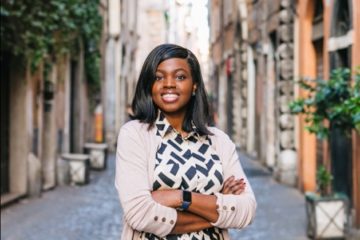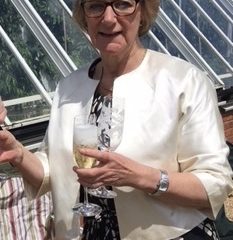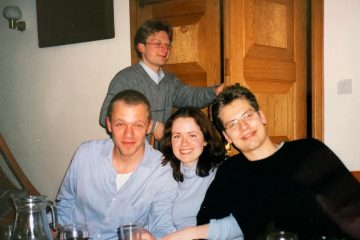When the taxi deposited me and my new husband, Jim (’78 Law) in the driveway of St. Edmund’s House (as it was then), in September 1978 I felt like I’d been dropped on another planet. The college looked drab, dreary-I’d been warned it was “Victorian Horror” architecture- and I thought the description apt. My greatest fear was that the college would be unwelcoming, that I would never fit in and adapt. My initial reaction was that this could never be home. How wrong I was.
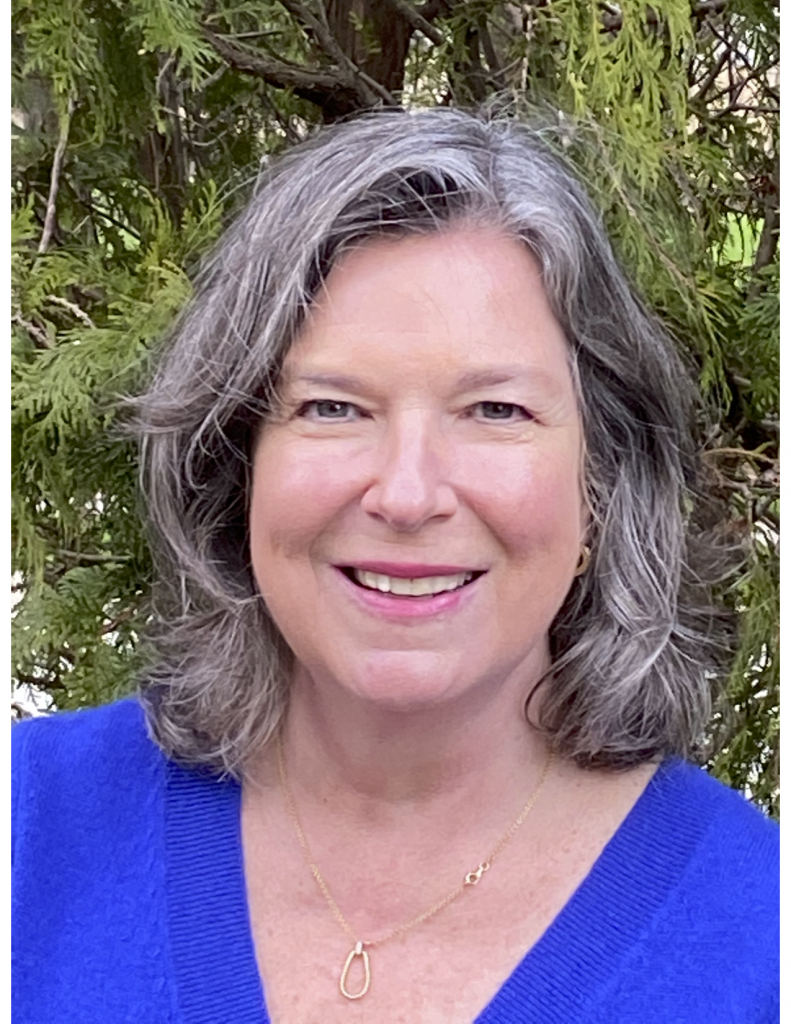
I had freshly graduated from a small, Catholic women’s college in Dubuque, Iowa, where I met Jim Carroll, a student at a neighboring small Catholic college. We were guided and mentored by a history professor, Fr. Bill Wilkie, who had been a Visiting Fellow at St. Edmund’s several years before. In our final year of college, he suggested we take the very long shot chance of applying to Cambridge and St. Edmund’s as affiliated students. My chance of acceptance was worse than Jim’s because I was a woman. Because St. Edmund’s was Roman Catholic, Jim and I would have to be married if we were to live in one of the married student maisonettes. We were planning on marrying anyway, but marriage at the advanced age of 22 must be a fait accompli, if by some miracle we were both accepted.
The miracle happened. Jim and I might have been among the first (perhaps the first) married couple, matriculated undergraduates in the history of the university. Although I was greatly eager to begin my studies at Cambridge, I felt trepidation. I was admonished that student life was difficult for women at Oxbridge and that I would not find it easy. The stories I heard from prior women Cambridge graduates scared me to death, and I began to second-guess this decision.
St. Edmund’s House comprised about 90 students in the late 1970’s. I was just over a dozen matriculated women as well as Visiting Scholars in the college.
Contrary to my fears, St. Edmund’s was a welcoming, friendly community. John Coventry was the Master at the time, a brilliant man with a dry, acerbic, wit. Many of the Fellows were devoted to the college and the students. Bruce and Annette Elsmore, who both recently passed away, were like the college parents. Tony Palmer, the Senior Tutor, spent a day at the Home Office in Croydon sorting out our visa problems. But the college was really run by Frances Robertson, affectionately known as “Mrs. R”, the College Secretary. She and the Master were chain smokers who filled the college offices with fumes and practically smoked out Julia, Mrs. R’s ever -capable assistant. Mrs. R ran the college like she ran Lord Beaverbrook’s secretarial team during the Blitz. When she saw how poorly our maisonette was equipped, she promptly went to John Lewis to buy what she thought we needed to prepare a “proper meal”. How I loved her.
A genuine community developed for me among the women of St. Edmund’s. Although there were few women students, there were many women partners and spouses, particularly in the flats and maisonettes. This is where the first women’s eight crew in the college was born. Well, it wasn’t even an eight in the beginning. It was a four, and an old “clinker” that weighed too much for us to carry. There was only one eight in the college at the time and “The Men” needed it. If we wanted to learn to row, we had to be content with the clinker. I was a reluctant member of the crew and needed to be pushed into joining. I did not relish getting out of bed at 5:00 a.m. to put that tub in the water and strain to balance it. But we persisted and we learned. “The Men” were so impressed with our tenacity that they eventually “let” us use the eight. This was a game changer for us. We recruited more women for our boat, adhered to (fairly) rigorous practice sessions and entered the Bumps (at the bottom of the bottom division).
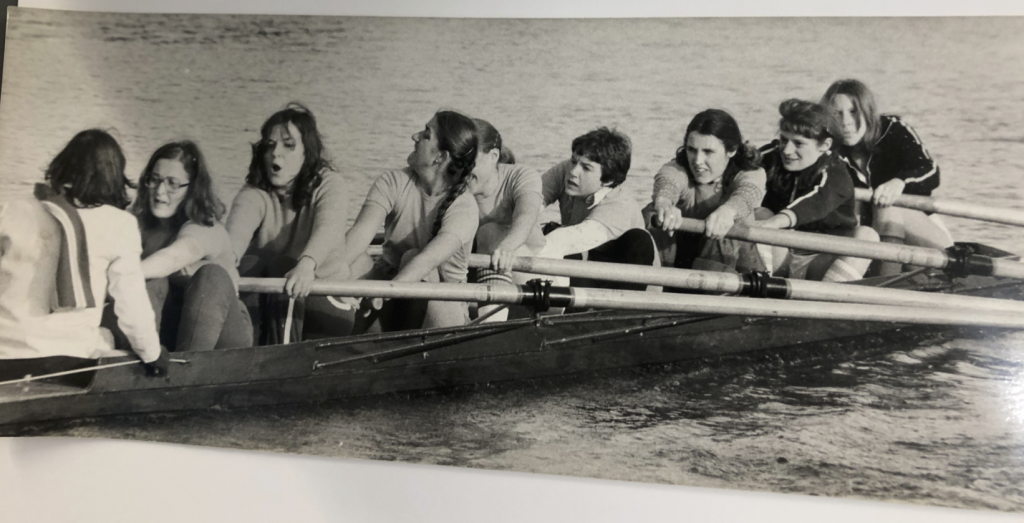
The crew in order starting with the Cox: Cathy Hunter, Cathy Chorniaway, Jane Skelley Carroll, Bernadette Hardaker, Nina Houghton -Wians, Dale Brown Agatha Dawson, Fiona Reidy, Gillian Tucker.
The women’s boat had two memorable experiences in the Bumps in my tenure: our near miss at winning an oar, with 3 bumps and a row over and a spectacular boat crash on the Cam. When the St. Edmund’s boat bumped the boat ahead, the bumped boat did not pull over and stopped dead in the middle of the Cam. The St. Edmund’s boat tried to pull out of the way as fast as we could, but the subsequent boats kept coming full tilt. I remember the sound of screams, splintered wood and women falling into the water. There were about half dozen badly damaged or destroyed shells piled on the sides of the Cam. Our cox suffered broken ribs and some of the women in the other boats were hurt, but miraculously none too seriously. It could have been tragic. We had the shell repaired and went on to row again.
Jim and I made some of the best friends of our lives at St. Edmund’s, who we treasure with all our hearts to this day. We both went on to careers in law, Jim as a corporate lawyer and I as an immigration lawyer and raised three wonderful children who have spent their lives hearing our stories of St. Edmund’s.
